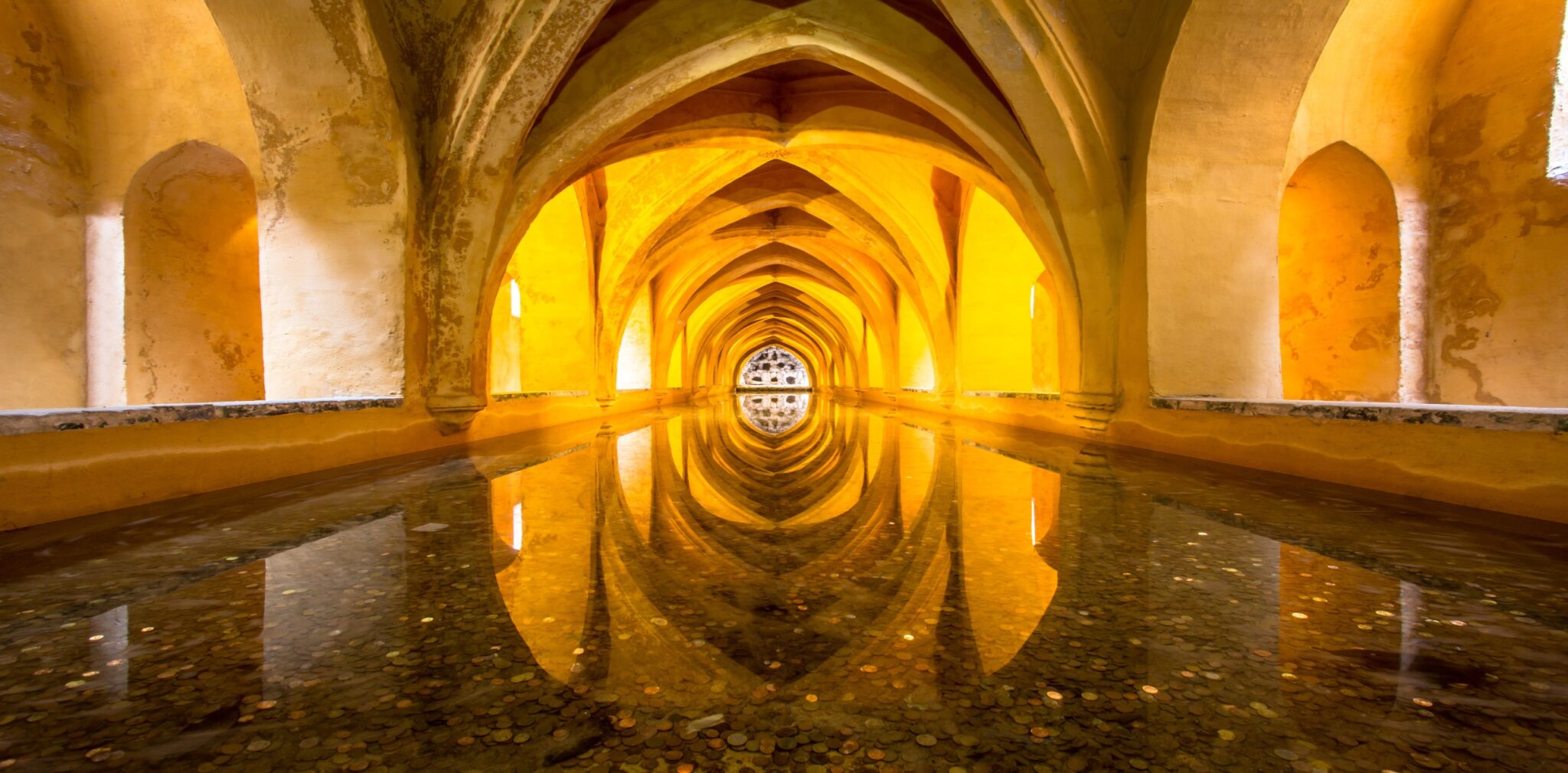Discover El Bañuelo, the oldest Moorish baths in Granada
The traditional Arab baths, or hammams, inherited by the Muslims from the Roman baths, spread rapidly throughout al-Andalus. These spaces functioned as social meeting places where, in separate shifts for men and women, people came to wash themselves, have their hair cut, receive massages and relax. More than a simple hygienic routine, these baths had a spiritual significance: in Islam, water is a symbol of purification, washing away sins according to the precepts of the Qur'an.
Located next to the Darro River, El Bañuelo is the oldest of the 21 baths that existed in Muslim Granada. It is also the best preserved of the four historic hammams in the city, and the tradition of going to these baths to relax and enjoy a Moorish tea is still very much alive today.

History and uniqueness of El Bañuelo
Also known as the Baños del Nogal or Baños de los Axares, after the neighbourhood that houses it, El Bañuelo dates from the 11th century, during the reign of the Zirid king Badis. Its construction was financed by the Jewish vizier Samuel Ibn Nagrela, a philosopher and poet. This makes the building the oldest civil construction in Granada and one of the best-preserved hammams in all of Al-Andalus.
After the Christian takeover of Granada, these baths fell into decline. Considered by the new owners to be morally questionable places, many were destroyed or transformed. However, El Bañuelo was adapted to function as a public washhouse, allowing its original structure to remain virtually intact. In the 20th century, the architect Leopoldo Torres Balbás promoted the restoration of the building, recovering its original essence.
Today, declared an Asset of Cultural Interest, El Bañuelo can be visited free of charge through an adjoining Christian dwelling. Its rectangular design includes several rooms that represent the typical model of an Arab hammam: from a vestibule for leaving clothes, to the refreshment room with temperature regulated according to the season. The warm room, the largest and most photogenic, features an impressive dome with octagonal star-shaped skylights that filter natural light, creating an almost magical atmosphere. The hot room, or sauna, retained a boiler to maintain high temperatures and a system of pipes under the floor that made it necessary to wear wooden sandals to avoid burns.
Hidden Arab baths and their current situation in Granada
The Albaicín, the city's historic quarter, is home to two other medieval hammams, although in worse condition than El Bañuelo. In Calle Elvira, next to the church of San Andrés, are the baths of Hernando de Zafra, dating from the end of the 12th century and named after the secretary of the Catholic Monarchs, to whom they were donated after the conquest. They are currently in a state of abandonment, hidden behind graffitied walls.
On the other hand, in the Calle del Agua are the largest Arab Baths of Islamic Granada, built between the 12th and 13th centuries. These, sadly, are only accessible with special permission and are also in a state of ruin, a situation which has led to protests from the local residents for their restoration.
In contrast, the Arab Baths of the Comares Palace, within the Nasrid Palaces complex of the Alhambra, have recently been restored and reopened to the public. Built in the 14th century, these baths were private and exclusive to the royal family, as reflected in their luxurious finishes. Of particular note is the Sala de las Camas, a space for relaxation and political relations. Legend has it that the sultan watched from a gallery as the women prepared for bathing, choosing one of them to spend the night with him. These baths were closed to the public until 2017, when renovation work was completed.
The experience of Arab baths today
After exploring so many historic baths, the city offers the opportunity to experience first-hand the tradition of the Nasrid hammam. In Granada, modern Arab baths have sprung up that faithfully reproduce the ancient ones, adding services such as massages and tea shops for a complete experience. These include Hammam Al Ándalus, which is even installed over original baths from the 13th century, and others such as Baños Aljibe San Miguel or Baños Elvira, where it is possible to enjoy this tradition from around 25 euros.
Granada and the Seda Club Hotel: luxury and tradition just a stone's throw from the city centre
In the heart of this vibrant city, just a 15-minute walk from the main monuments and historic districts, lies Seda Club. Our luxury hotel in the centre of Granada combines modern elegance with a privileged location for those who wish to explore every corner of the city.
In addition, Seda Club offers a unique dining experience with its exclusive brunch, available every Friday, Saturday and Sunday from 11:00 am to 1:00 pm. You can enjoy it in any of its spaces, be it the main restaurant, the cosy lobby bar, the intimate atmosphere of Clandestino or the breathtaking views from the sky lounge.
Its location, services and atmosphere make every stay unforgettable, inviting travellers to immerse themselves in the historical and cultural essence of this Andalusian jewel.
